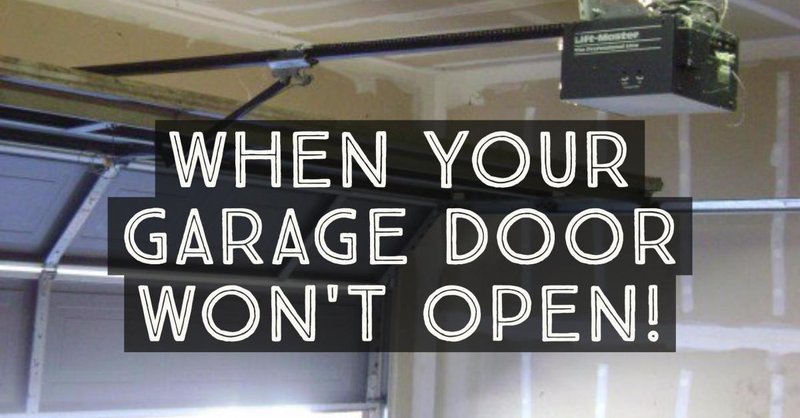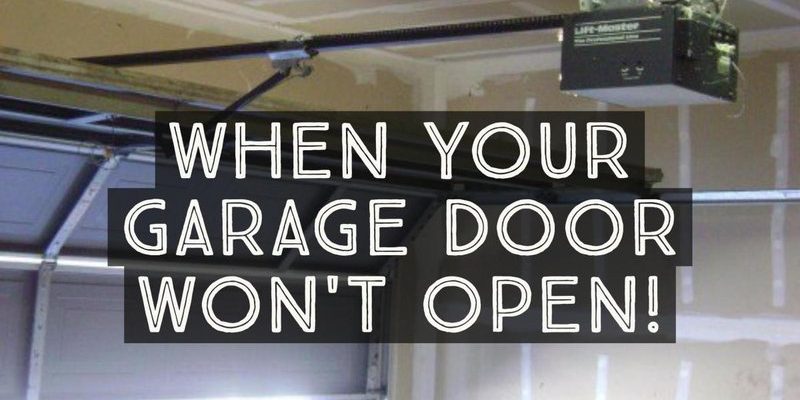
Let’s talk through what’s really going on. Genie, a household name when it comes to garage door openers, has made millions of remotes. Some are simple single-button clickers; others can manage multiple doors. But here’s the thing: technology, even the trusty kind, has its quirks. When your remote starts being moody—opening the door now and then, but not always—it’s trying to tell you something. Maybe it’s a quick fix, maybe it needs a little extra troubleshooting. So, what’s really stopping your Genie garage remote from working like clockwork?
Dead or Weak Remote Batteries: The Most Common Culprit
If I had a dollar for every time a garage remote problem turned out to be the battery, well, let’s just say I’d have a pretty respectable coffee fund. Weak or dead batteries in your Genie remote are the number one reason it fails to open the garage door consistently. Most Genie remotes use a standard coin-cell battery that’s easy to swap out, but honestly, they do run down much faster than you’d expect—especially if you park outside or live in a place with temperature swings.
Here’s the thing: a battery that’s just starting to die doesn’t always quit cold turkey. Instead, your remote might work every third press, or only if you’re super close to the garage door opener. So if you notice the range shrinking, or you’re pressing the button harder (hoping that’ll help), the battery is absolutely the place to start.
You might be wondering—do all Genie remotes use the same battery? Not quite. Some use CR2032 coins, others use different types. Always check your manual or pop open the remote and look for the battery number printed inside. Swap in a fresh battery, making sure you’ve got the positive and negative sides lined up right. Nine times out of ten, this quick fix brings your remote back to life.
Signal Interference and Obstructions: What’s Getting in the Way?
Let me explain why your Genie remote sometimes seems moody. The remote works by sending a radio signal to your garage door opener. But all sorts of things can get in the way of that signal—metal doors, nearby electronics, even your neighbor’s fancy wireless gadgets.
Picture your garage as a mini-battlefield of radio waves. Big metal shelves, cars, and even your own garage door can weaken or block the remote’s signal, especially if you’re trying to open the door from farther away. If your Genie opener lives on an older frequency, you might even get interference from baby monitors, WiFi routers, or cordless phones. That’s why sometimes the remote works perfectly when you’re inside the garage, but struggles from the street.
If you’re having trouble, try standing closer to the door opener (just for a test). If it suddenly works, interference or distance is likely the culprit. Keep electronics and metal objects away from the opener’s antenna. For a more stubborn case, check if the opener’s antenna wire (it’s usually a little wire hanging down) is straight and not tucked behind something. Sometimes, just adjusting that wire can boost your signal range.
Remote Sync and Pairing Issues: Lost in Translation
Modern Genie garage remotes aren’t always “plug and play.” They need to be properly synced—or paired—with your specific garage door opener. If the sync gets lost (maybe after a power outage, or if you’ve recently replaced the remote or opener), the remote’s button presses won’t do much more than light up a tiny LED.
You might be thinking, “But it worked before!” And you’d be right. Sometimes remotes lose their code or get “de-programmed” if batteries were removed for a long time, or if you pressed a reset button by mistake. Pairing a Genie remote usually means pressing a “learn” or “program” button on the main garage opener unit, then pressing the button on the remote as instructed in your model’s manual.
If you have more than one remote, check if they’re all acting up. If just one is misbehaving, re-pairing it may solve your problems. If all remotes are suddenly out of sync, the opener itself (the ceiling unit) might need a full reset or reprogram. Always follow the manufacturer’s steps carefully—each Genie model has its own quirks with codes and pairing.
Pro tip: After syncing, test the remote from different locations to make sure the pairing “stuck.” If the remote sometimes works but not always, try re-pairing it once more, just to rule out a bad sync.
Physical Damage and Wear: Remote Buttons, Antennas, and More
Here’s the thing—remotes are tougher than they look, but they’re not indestructible. Dropping your Genie remote on the driveway or accidentally spilling coffee on it can break internal parts even if the casing looks fine. Over time, buttons wear out, contacts get dirty, and the circuitry inside gets tired, just like any other gadget.
A common sign of button wear is when you have to press extra hard, or the remote responds only when you hit it just right. Sometimes, the button itself gets loose or mushy, meaning the inside might need a cleaning. Pop the remote open (gently—use a small screwdriver or even a coin), then look for any obvious gunk, corrosion, or broken plastic parts. A soft cloth and a tiny dab of rubbing alcohol can clean minor dirt off the board and button contact pads. If things look badly corroded, it may be time for a replacement remote.
Don’t forget the opener’s antenna. If the little wire is snapped, bent, or missing, it can totally kill the signal range. Make sure it’s intact and hanging down freely from the opener unit for best performance.
Garage Door Opener Problems: Not Just the Remote
Let’s not blame the remote for everything—it’s only half the story. The Genie opener unit in your garage ceiling sometimes acts up, too. Power surges, blown fuses, circuit board errors, or simple aging can cause the opener to misread signals, ignore remotes, or open and close on its own schedule.
You might be wondering how to separate remote problems from opener problems. Simple: try your wall control button (the one inside your garage). If that works fine every time, your opener probably isn’t the problem. But if both the wall button and the remote act flaky, there’s a good chance the issue is with the opener itself—maybe a failing logic board or an interrupted power supply.
Some Genie models have diagnostic lights or error codes. If yours does, check for blinking light patterns after a failed remote attempt and consult your manual. Sometimes a “hard reset” (unplugging the unit for a few seconds, then plugging back in) will clear odd glitches. If not, you might need to call in a pro for deeper troubleshooting.
Programming, Codes, and Security: Changes Since 1990s
If your Genie system is more than 20 years old, it probably uses a basic “fixed code” remote. These are easy for remotes to communicate but also easier for others to intercept. Newer Genie remotes and openers use “rolling code” technology, which changes the code with every press. This is great for security, but it means remotes and openers have to stay in sync, and sometimes an out-of-date remote or a mismatched code can cause problems.
You might be using a universal remote instead of a genuine Genie model. While many are compatible, they sometimes need extra steps for pairing or won’t support the latest rolling code features. Always check the packaging or manual for compatibility. If you’re using a universal remote and it’s acting up, try reprogramming it from scratch using the opener’s “learn” button.
Here’s the thing—not all remotes can keep up with all opener models, especially after Genie releases software updates or new security features. When in doubt, a genuine Genie brand remote is least likely to cause pairing and code headaches.
Environmental Factors: Temperature, Humidity, and Placement
Few people think about the weather when their garage remote misbehaves, but it actually can matter more than you’d guess. Extreme heat or cold can shorten battery life or cause plastic remote cases to flex, keeping the button from making proper contact. On freezing mornings, you might find your Genie remote stubbornly refusing to cooperate until the car warms up.
Humidity can also be a sneaky problem. Moisture inside the remote or opener can cause corrosion, electrical shorts, or random behavior. If you store your remote in the car where it bakes in summer and freezes in winter, consider keeping it in a pocket or insulated spot instead.
Placement matters, too. If the opener is mounted in an awkward spot—like behind metal beams or surrounded by clutter—signal strength drops. Sometimes, relocating a metal toolbox or even moving your parked car changes the remote’s reliability. Open spaces and a clear antenna make for the best performance.
Troubleshooting Steps: What to Do If Your Genie Remote Is Unreliable
Here’s how I’d walk through the problem if your Genie garage remote won’t open the door reliably:
- Swap the battery: Always start with a fresh one. It’s the easiest fix.
- Test range: Try opening the door from up close, then farther away. Note any changes.
- Look for interference: Move electronic items and metal objects away from the opener and antenna.
- Check the antenna: Make sure it’s intact and hanging free.
- Re-pair the remote: Use your opener’s “learn” or “program” button to resync the remote.
- Test other remotes: If you have a backup, see if it’s affected too.
- Inspect for damage: Open the remote and check for corrosion, cracked buttons, or loose parts.
- Reset the opener: Unplug it briefly to clear odd electronic glitches.
If nothing works, jot down your opener’s model number and remote type. Then, call Genie support or a local garage door expert—they’ve seen it all and can help dig deeper.
The bottom line: Genie garage remotes stop working consistently for lots of reasons, but most fixes are simple if you go step by step. Don’t panic or toss the remote yet—most issues can be handled without a full replacement.
If you’re patient and check the common trouble points, you can turn a moody Genie remote into a reliable helper again. Sometimes all it takes is a new battery, a little cleaning, or a careful sync. Keep your opener and remote in good shape, and you’ll be back to smooth, click-and-go convenience in no time.
